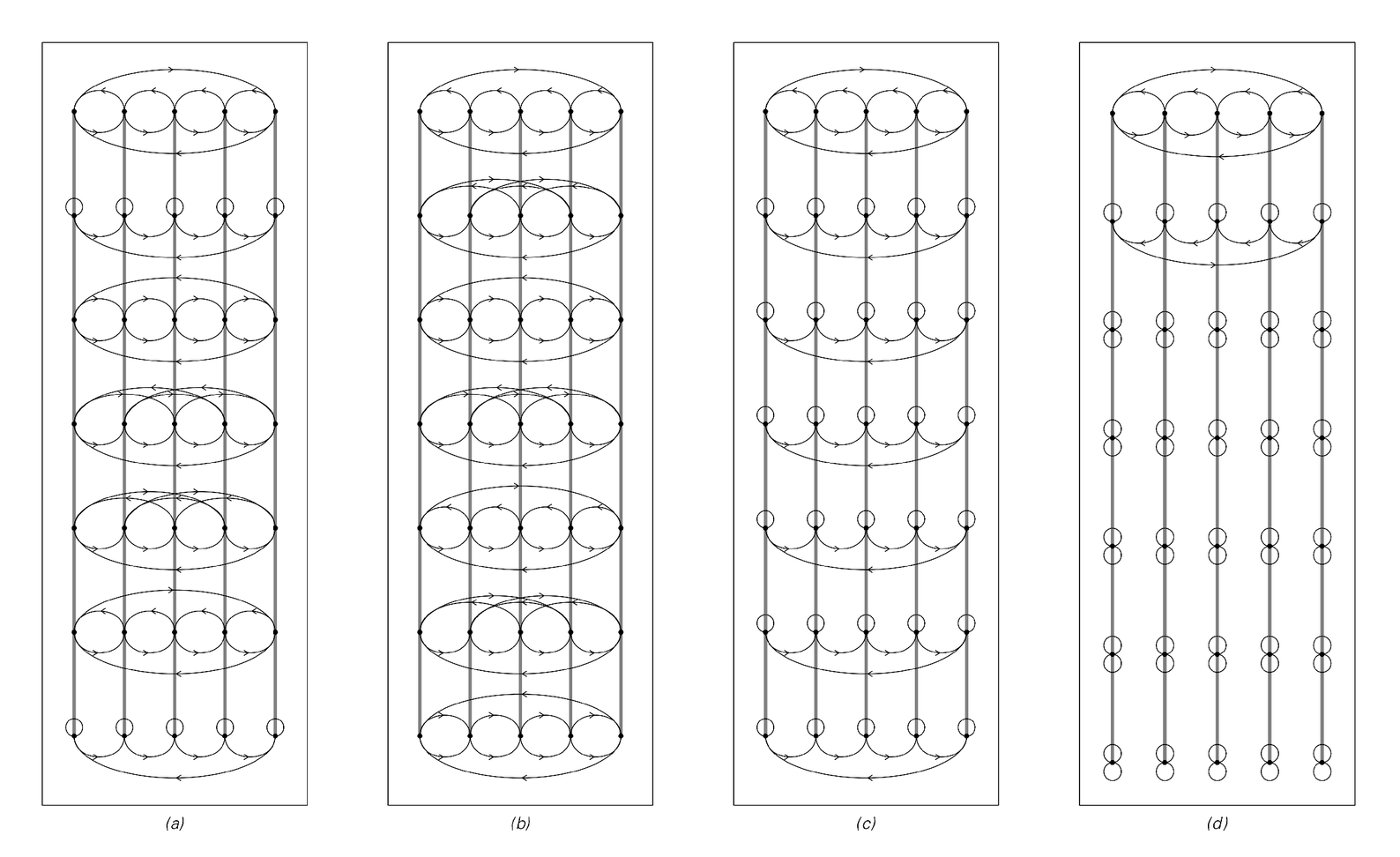below. And in effect, this then means that other nodes are dropped from the network, so that the total size of the network decreases.
By changing the underlying rules, however, the number of nodes in a network can also be made to increase. The basic way this can be done is by breaking a connection coming from a particular node by inserting a new node and then connecting that new node to nodes obtained by following connections from the original node.
The pictures on the next page show examples of behavior produced by two rules that use this mechanism. In both cases, a new node is inserted in the "above" connection from each existing node in

The evolution of network systems with four different choices of underlying rules. Successive steps in the evolution are shown on successive lines down the page. In case (a), the "above" connection of each node is rerouted at each step to lead to the node reached by following first the below connection and then the above connection from that node; the below connection is left unchanged. In case (b), the above connection of each node is rerouted to the node reached by following the above connection and then the above connection again; the below connection is left unchanged. In case (c), the above connection of each node is rerouted so as to loop back to the node itself, while the below connection is left unchanged. And in case (d), the above connection is rerouted so as to loop back, while the below connection is rerouted to lead to the node reached by following the above connection. With the "above" connection labelled as 1 and the "below" connection as 2, these rules correspond to replacing connections {{1}, {2}} at each node by (a) {{2, 1}, {2}}, (b) {{1, 1}, {2}}, (c) {{}, {2}}, and (d) {{}, {1}}.



